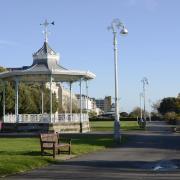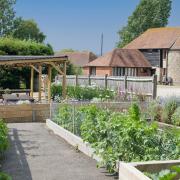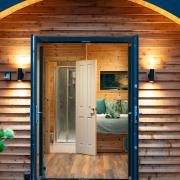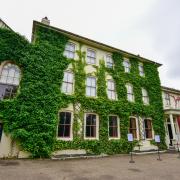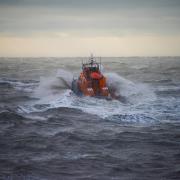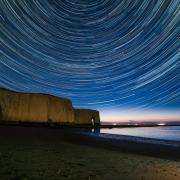Over one hundred years ago, a chalky landmark was created on a Wye hillside to mark a King's coronation. David Perkins explores its history
A coronation year provides a good opportunity to reflect on how past coronations were commemorated. In 1902 students from what was then the South Eastern Agricultural College at Wye, later to become Wye College, marked the coronation of Edward VII by digging the design of a crown, some 55 metres tall, in the chalk on the Wye Downs. The crown was intended to be visible for miles around and catch the eye of thousands of visitors travelling by train through Kent to Margate and other seaside towns.
Cut into the hillsides of Britain, ancient giant horses such as those found in Uffington and Cherhill, and figures such as the Long Man of Wilmington and the Cerne Abbas Giant have long fascinated visitors. Later, the 18th and 19th centuries were prime times for the creation of giant hill carvings such as the horse at Alton Barnes, Wiltshire, cut in 1812. Creators of hillside carvings in the 20th century tended to turn to other symbols - such as the Bulford Kiwi, near Salisbury, a giant bird carved into a hillside by soldiers from New Zealand in 1919. Some of these symbols are big enough to be seen from twenty miles or more.There are about 30 surviving large-scale chalk hillside carvings in the UK.

There were no giant hillside carvings – or at least none that survived - in the southeast of England until the 20th century. It does seem surprising that there were none in Kent, given that the county has a horse as its symbol. It was not until 2003 that the Folkestone White Horse was created on Cheriton Hill to a design by local artist Charlie Newington. It was originally intended to mark the Millennium but was delayed by planning-permission issues. There are white crosses in the chalk at Lenham – clearly visible from the A20 - and also at Shoreham in Kent. These crosses were built as war memorials after World War I. A monument in the shape of an aeroplane to Louis Blériot’s cross-channel flight in 1909 was placed near Dover Castle in 1910. It does not seem to attract much attention today, perhaps because Blériot was French and not British.
The Crown at Wye’s association with the 1902 coronation has not always been well remembered, but there is no other similar crown in the UK and it has become a much-used symbol of the village. A crown is an appropriate symbol, not only because of the coronation, but because Wye has had many royal connections over the centuries. Before 1066, it was “a royal vill” at the centre of a large administrative area, an occasional residence for the Kings of Kent and later Kings of Wessex.
In May 1902 a Parish Meeting was held in Wye to plan celebrations for the coronation of Edward VII. It was Daniel Hall, founding Principal of the South Eastern Agricultural College (later Wye College), who proposed the carved crown, an idea not met with overwhelming enthusiasm – the vote passed by a slender majority of one. It was left for the college and its students to put the plan into effect, led by their Vice Principal, TJ (Tommy) Young. According to local historian Paul Burnham, a suitable image was copied - it seems from a coin - onto a piece of paper, then marked onto the hillside with flags that Young directed students to place in the shape of a crown, using the design and his theodolite surveying tool – Young set it up near Withersdane - as a guide. With the shape marked out, the digging could begin, with barrow load after barrow load of spoil to dispose of in the quarry below the site. In a lesson in productivity for us today, the crown was cut by hand in the space of a week, the 35 students who created it powered by an allowance of beer.

The King had a health scare the summer of 1902 and the coronation was postponed until August. In July, to celebrate the King’s return to good health, there was a national bonfire scheme in which many communities in Kent were enthusiastic participants - something in the region of 40 major bonfires were lit across the county and could be seen for miles around.
On coronation night, 9 August, 1902, 1,500 lanterns were lit to illuminate the Crown at Wye, in a huge display that reportedly could be seen as far away as Hastings. The King missed the display but visited Eastwell Park (now Eastwell Manor) in 1904 as a guest of Baron Gerard, and was treated to a repeat performance of the mass lantern illumination of the Crown, visible from the grounds at Boughton Aluph. It must have been quite some sight.
















